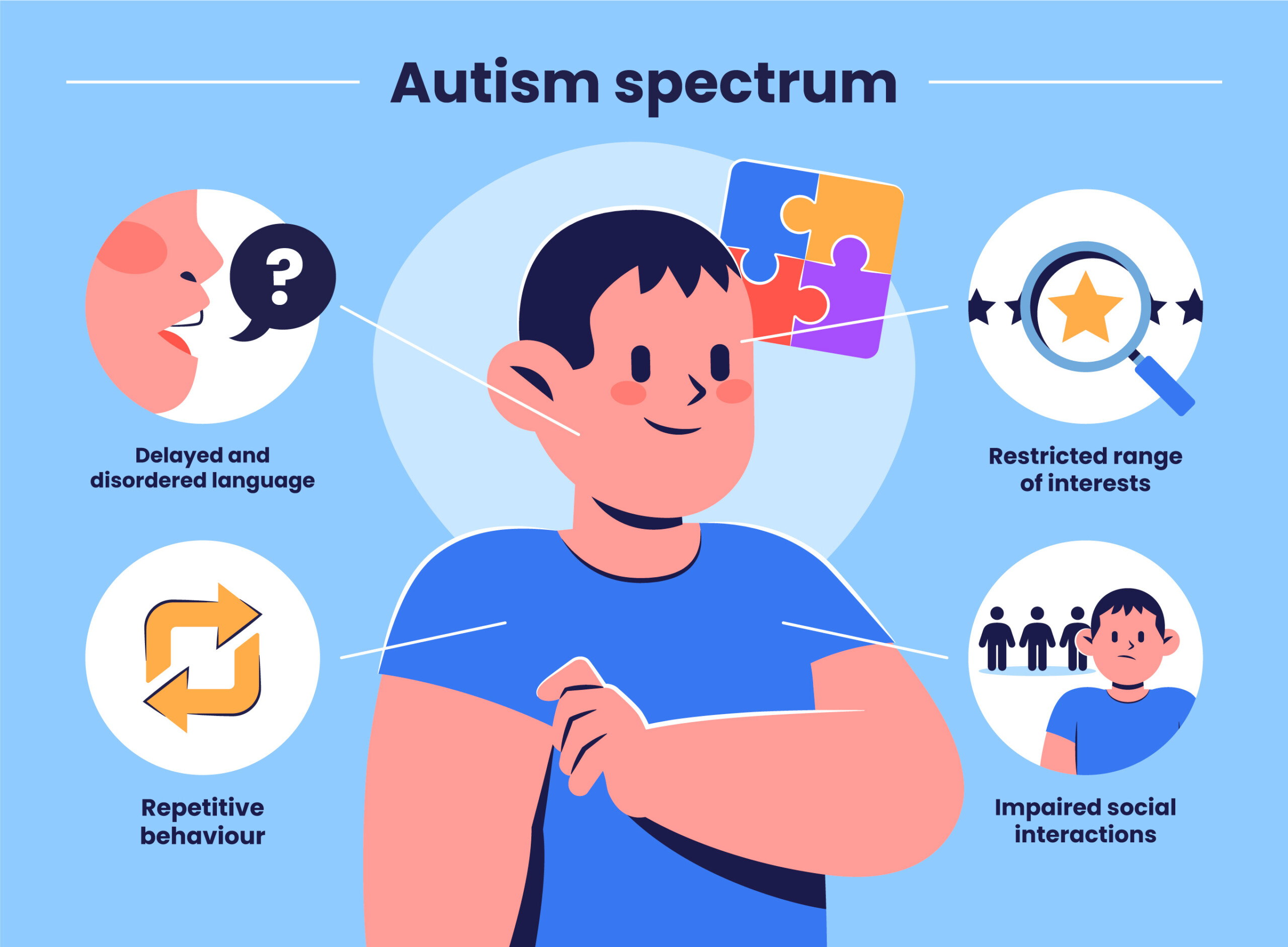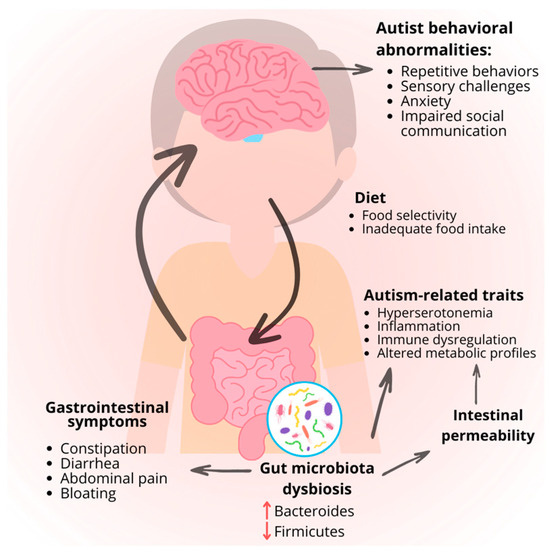How to identify early behavioral traits and seek help from an Aba Therapist Near Me
How to identify early behavioral traits and seek help from an Aba Therapist Near Me
Blog Article
Comprehending the Influence of Behavioral Autism on Every Day Life and Social Communications
You might not realize just how deeply behavior autism impacts day-to-day life and social communications. People on the spectrum typically navigate a globe filled with communication obstacles and sensory overload. These challenges can lead to aggravation and seclusion, influencing their partnerships and general wellness.
Specifying Behavioral Autism and Its Qualities
Behavioral autism, often referred to as autism spectrum condition (ASD), includes an array of conditions defined by obstacles in social communication, interaction, and recurring behaviors. You may notice that individuals with ASD usually struggle to interpret social hints, which can lead to misconceptions in conversations. They might discover it tough to establish eye call or participate in tiny talk, making social circumstances really feel frustrating.
Interaction troubles can materialize in numerous methods, from delayed speech advancement to a preference for utilizing fewer words. Recurring habits, such as hand-flapping or rocking, can act as coping systems to take care of tension or sensory overload. These qualities can profoundly affect day-to-day life, making it important for you to understand and support those with ASD. By identifying these traits, you can foster a setting that advertises approval and encourages efficient interaction, helping individuals with autism grow in their everyday communications.
The Spectrum of Autism: Recognizing Irregularity in Behavior
Autism spectrum disorder (ASD) isn't a one-size-fits-all diagnosis; it differs extensively amongst people. You could observe that some individuals with ASD show light signs, while others may encounter more considerable challenges. This irregularity can manifest in behaviors, rate of interests, and sensory sensitivities. You might come across individuals that are extremely spoken and involve quickly in conversations, while others may favor solitary activities or interact non-verbally.
Additionally, the means individuals with ASD reply to sensory input can vary substantially; some could be bewildered by brilliant lights or loud noises, whereas others prosper in stimulating settings. The range also consists of distinctions in social communications; some individuals might struggle to interpret social cues, while others navigate social settings with loved one convenience. Comprehending this variability is crucial, as it aids you value everyone's special experience and tailor assistance to their specific requirements, fostering an extra inclusive environment for everybody.
Interaction Difficulties Dealt With by People With Autism
When you connect with individuals on the autism range, you might notice their special communication difficulties. They often deal with troubles with both nonverbal and verbal cues, which can affect their social interactions. Recognizing these obstacles is important for promoting better links and assistance.

Verbal Interaction Difficulties
Many individuals on the autism range experience spoken interaction troubles that can considerably influence their everyday communications. Your speed, volume, or tone could not align with social assumptions, creating others to misinterpret your objectives. Acknowledging these obstacles can aid you and your support network create approaches to enhance interaction and promote far better connections with others in your daily life.
Nonverbal Interaction Barriers
Spoken interaction isn't the only difficulty individuals on the autism spectrum face; nonverbal interaction obstacles can be just as considerable. You might locate it challenging to interpret body movement, facial expressions, and eye call, which are vital for reliable communication. These challenges can result in misunderstandings or false impressions of social hints, making interactions feel frustrating or complex. You may struggle to share your very own feelings with nonverbal means, leaving others unsure of your sensations or objectives. This detach can create feelings of seclusion and irritation. Recognizing these barriers is crucial for cultivating understanding and empathy in your communications. By attending to nonverbal interaction, you can discover methods to boost your social experiences and boost your overall high quality of life.
Social Communication Effects
Social communications can typically really feel overwhelming because of the unique communication challenges dealt with by individuals with autism. You may deal with interpreting social hints, making it tough to comprehend mockery or body movement. This can result in misunderstandings or awkward moments in discussions. In addition, initiating and maintaining discussions might really feel difficult, triggering anxiousness in social situations. You might choose structured atmospheres, making spontaneous communications uneasy. It's likewise typical to experience difficulty in taking part in small talk, which can hinder forming new relationships. Recognizing these difficulties can assist you discover approaches to improve interaction, such as exercising social abilities in safe settings or utilizing visual aids - Aba Therapist. Recognizing your demands allows you to browse social communications with greater self-confidence and ease.
Social Communication and Connection Structure in Autism
While building partnerships can be testing for people with autism, comprehending their distinct viewpoints and interaction designs can promote purposeful links. You may see that several people on the spectrum like direct interaction and might fight with social signs or tiny talk. By being simple in your communications, you can aid produce a setting where they really feel comfortable.
Take the time to pay attention and observe how they reveal themselves. This understanding can direct you in guiding conversations better. Participating in shared rate of interests can likewise act as a bridge to much deeper connections. Whether it's a hobby, a favored show, or a shared enthusiasm, these usual strings can open doors to relationship.
Every Day Life Routine: Navigating Obstacles and Methods
Navigating every day life routines can be specifically challenging for individuals with autism, particularly when unforeseen modifications occur. You may find convenience in having an organized schedule, as it helps you anticipate what's next. It's normal to feel overwhelmed or nervous when interruptions take place. To navigate these challenges, take into consideration carrying out aesthetic timetables or lists. These tools can provide clearness and reassurance.
Establishing a regimen that includes sensory breaks can additionally be valuable. You can prepare time-outs throughout your day to charge. It's essential to connect with those around you, letting them understand your demands and preferences. This aids develop an understanding environment.
Finally, method mindfulness strategies to handle stress and anxiety and anxiety. Straightforward breathing exercises or grounding strategies can make a considerable visit the website difference. By including these approaches, you can boost your day-to-day routine and minimize disruptions, making life feel more workable.
Toughness and Capabilities of People on the Autism Range
Comprehending everyday life regimens is just one element of the autism experience. Many individuals on the autism range possess amazing strengths and capacities that establish them apart.
Additionally, your memory abilities typically beam, especially in locations of passion. Aba Therapist. This propensity for preserving info can make you a beneficial resource in areas like art, scientific research, or innovation. You might also show strong aesthetic reasoning, enabling you to visualize complex ideas and solve issues creatively
Additionally, your one-of-a-kind viewpoint on the globe can foster empathy and understanding in others, improving social interactions. Accepting these staminas not just increases your self-confidence however likewise aids others value the diverse talents you bring to the table.
Developing Inclusive Atmospheres for People With Autism
Producing comprehensive settings for people with autism starts with making sensory-friendly spaces that satisfy their unique demands. You can likewise promote chances for social interaction, aiding to build friendships and links. Visit Website By making these modifications, you'll add to a more inviting ambience for everyone.
Creating Sensory-Friendly Spaces
While making sensory-friendly rooms, it's crucial to mirror on the one-of-a-kind demands of people with autism. Incorporate quiet areas where people can recharge and pull away when overwhelmed. Include visual routines or clear signs to assist people browse the space with confidence.
Promoting Social Communication Opportunities
Creating sensory-friendly rooms not just addresses specific convenience yet additionally sets the stage for significant social interactions among people with autism. Urge peer mentoring, coupling individuals with autism with supportive peers that can guide them via social circumstances. By applying these techniques, you can enhance social possibilities, assisting individuals with autism develop relationships and strengthen their social skills in a risk-free, inviting atmosphere.

Often Asked Concerns
Just How Can Pals Assistance Somebody With Behavioral Autism?
You can sustain a close friend with behavioral autism by being client, listening actively, and respecting their boundaries. Participate in tasks they delight in, communicate freely, and develop a comfortable atmosphere where they feel valued and comprehended.
What Resources Are Available for Parents of Children With Autism?
You can discover numerous sources for parents of youngsters with autism, consisting of support system, academic websites, and neighborhood area services. Connecting with other parents can additionally give beneficial insights and shared experiences to aid navigate challenges.
Can Behavioral Autism Modification Over Time?

Yes, behavior autism can alter in time. You may observe changes in communication, social abilities, and habits as your youngster expands. Early intervention and assistance often play vital functions in these developing adjustments.
Exactly How Do Sensory Sensitivities Impact Life?
Sensory sensitivities can make daily experiences frustrating. You might deal with loud sounds or bright lights, bring about stress or avoidance. Locating atmospheres that suit your needs can greatly boost your comfort and total day-to-day live.
What Are Usual Misconceptions About Behavioral Autism?
You might assume behavioral autism only influences communication abilities, however it's more complex. Many assume individuals lack empathy or knowledge, which isn't true. Comprehending these misconceptions helps foster approval and support for those on the range.
Behavioral autism, commonly referred to as autism spectrum problem (ASD), includes a variety of problems identified by obstacles in social interaction, official source communication, and recurring actions.Social communications can usually really feel frustrating due to the special communication difficulties encountered by individuals with autism.Creating sensory-friendly rooms not only addresses specific convenience however also sets the phase for significant social communications amongst individuals with autism. Urge peer mentoring, combining individuals with autism with helpful peers who can guide them through social scenarios. By implementing these approaches, you can enhance social possibilities, aiding individuals with autism build friendships and reinforce their social abilities in a risk-free, inviting environment.
Report this page